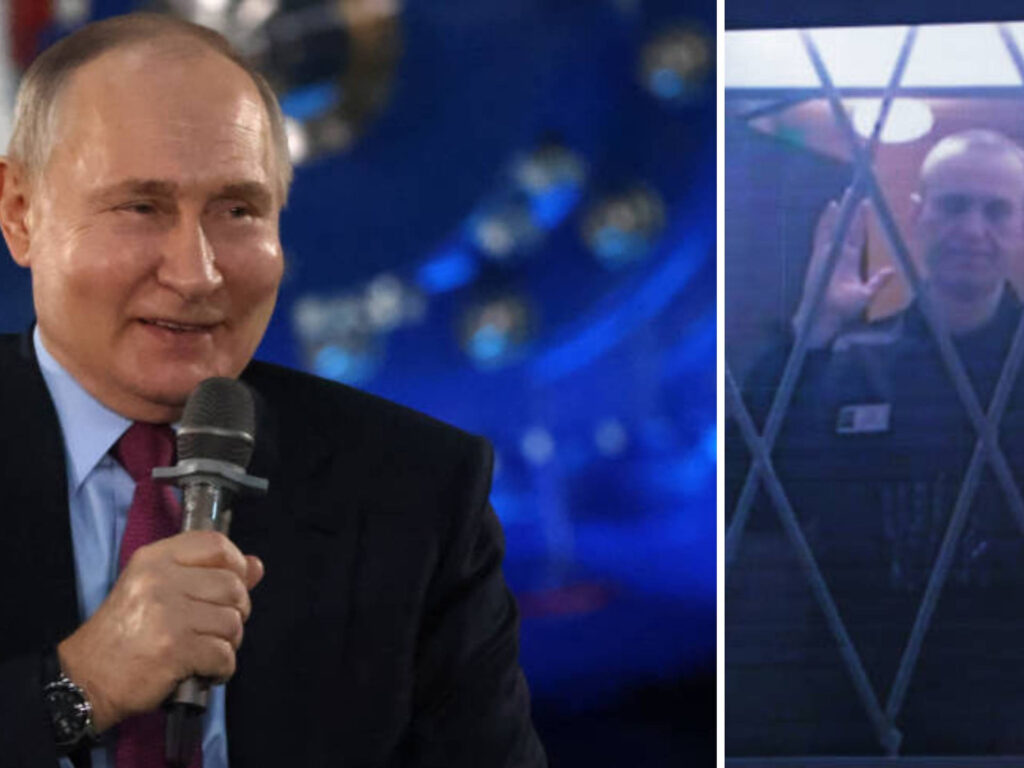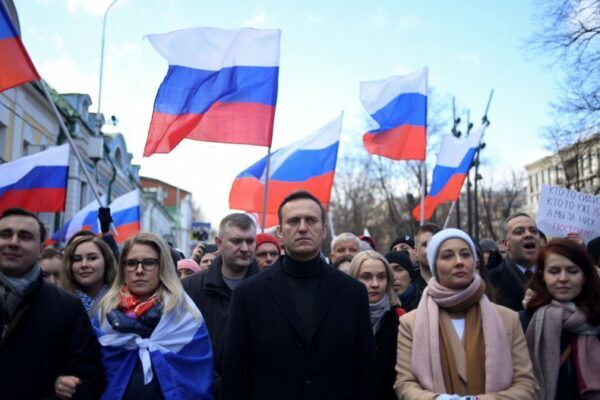Kremlin-aligned media have said Alexey Navalny had a blood clot. But critics and independent analysts say the circumstances of his death are suspicious.
Injuries were reportedly found on the opposition leader’s head and chest when his body was brought to a local hospital, but no autopsy has yet been performed according to a report by the Telegraph.
In the last known video of Alexey Navalny shot one day before his death on Friday, the fair-haired 47-year-old looks gaunt and cracks jokes, according to a report by Al Jazeera
“Navalny was filmed via a video link from the IK-3 penal colony, also known as the Polar Wolf prison, in the Arctic town of Harp during a video conference with a judge in the city of Vladimir some 600 kilometers south.” the report added
“I want you to replenish my [prisoner] account from your huge salary of a federal judge,” Navalny, clad in a black prison uniform, said, laughing sarcastically from behind bars, according to the grainy video.
A day later, Russian President Vladimir Putin’s most outspoken opponent fainted and fell after a walk, and was pronounced dead two hours later, despite “numerous resuscitation attempts,” prison officials said.
The cause of death is “being established,” they said.
Navalny’s lawyer and his mother, Lyudmila, were told at the prison on Saturday that the activist had died of “sudden death syndrome,” according to a post on X by Ivan Zhdanov, a close aide to Navalny.
Navalny’s spokeswoman Kira Yarmysh said an employee of the IK-3 prison colony in the Yamalo-Nenets region of Russia where Navalny was incarcerated, told Navalny’s mother that the body had been transferred to Salekhard by state investigators carrying out an examination.
But when his lawyer and mother arrived at the morgue after flying to Salekhard, they found it closed and were told that the body wasn’t there, Yarmysh said.
“We demand that Alexei Navalny’s body be immediately handed over to his family,” she wrote on X.
“We are convinced that Alexei was killed yesterday and the order to do this was given personally by Putin,” Yarmysh wrote.
The Kremlin has said any accusation that it is responsible for Navalny’s death is “unacceptable.” It didn’t immediately respond to a request for comment on Yarmysh’s remarks on Saturday.
The Kremlin-funded RT television channel claimed he had a blood clot, but Navalny’s supporters, Kremlin critics, and observers were unanimous in claiming that he had been murdered.
“They killed him. Even if not on that very day, several years of torture is also a way of killing,” Sergei Biziukin, a fugitive opposition activist from the western city of Ryazan, told Al Jazeera.
“Of course, this is a murder. He had been tortured to death for years,” Gennady Gudkov, a former intelligence officer turned opposition leader, told Al Jazeera.
Navalny’s deputy blamed Putin for Navalny’s “murder.”
“Specifically, it was Putin who killed him,” Ivan Zhdanov, who replaced Navalny as head of the Fund to Fight Corruption, a group that exposed corruption, worked with opposition activists and once had branches throughout Russia
Navalny’s mother said her son showed no signs of illness. “I saw him in the jail on February 12. He was alive, healthy, optimistic,” Lyudmila Navalnaya wrote on Facebook late on Friday.
For more than three years, Navalny was locked in several Russian jails – where he complained of severe back pain that made his feet numb and of “torture with insomnia” because of constant bright light in his cell.
Of the 37 months of his prison time, he spent 296 days in solitary confinement in box-like concrete cells where prisoners are not allowed to lie down during the day and can only sit on a bench that is 14 centimetres high and has no back to lean upon, his lawyers said.
“Navalny died as a result of murder – a premeditated murder, a methodically executed murder, a murder the Russian state is to blame for,” OVD Info, a human rights group that has been monitoring arrests and persecution of Kremlin critics, said in a statement late on Friday.
“There’s no need to poison or kill him in some other violent way – one just has to wait,” it said.
But Navalny was previously poisoned.
In July 2019, he was hospitalised with an “acute allergic reaction,” swellings and a rush, Russian medical doctors said, but never released the cause.
Navalny and his personal doctor said he had no allergies and the “reaction” was caused by an unspecified poison.
A year later, while on a plane over Siberia, he collapsed, fell into a coma and was rushed to a hospital after an emergency landing and then flown to a German clinic.
A conclave of German experts concluded Navalny had been poisoned with a rare and expensive nerve agent from the Novichok family of toxins developed in the USSR.
Navalny’s team and independent reporters said they had identified the purported poisoners, a group of Russian intelligence officers, and Navalny called one of them pretending to be a security official.
The officer, identified as Konstantin Kudryavtsev, told him the nerve agent was applied to the politician’s underwear, according to their conversation’s recording Navalny released. The Kremlin denied those claims.
After months of rehabilitation in Germany, he returned to Russia, was immediately arrested and stood several trials that his supporters, rights groups and Western governments called Kremlin-orchestrated.
He was serving three sentences, including a 19-year prison term for “extremism,” but remained the biggest thorn in Putin’s side. Despite arrests and emigration of its members, his Fund to Fight Corruption kept releasing investigative reports detailing corruption in the Kremlin halls of power.
Navalny remained active on social media with sarcastic posts ridiculing Putin and calling his full-scale invasion of Ukraine a “nightmare”.
His last Facebook post was dated February 14, Valentine’s Day, and addressed his wife Yulia “whom he loved more and more”.

As the world reacted with anger to the news that Alexei Navalny had died in a Russian prison, Vladimir Putin was seen grinning from ear to ear. Pictures showed the 71-year-old President and former KGB spy animated and merrily meeting workers at a factory in Chelyabinsk, in the Ural mountains
As the world reacted with anger to the news that Alexei Navalny had died in a Russian prison, Vladimir Putin was seen grinning from ear to ear. Pictures showed the 71-year-old President and former KGB spy animated and merrily meeting workers at a factory in Chelyabinsk, in the Ural mountains
Analysts believe that Putin saw Navalny as one of the biggest threats to his power. In a February 1 post on Facebook, Navalny urged Russians to show up at polling stations “exactly at noon” to vote against Putin.


Leave a Reply
You must be logged in to post a comment.